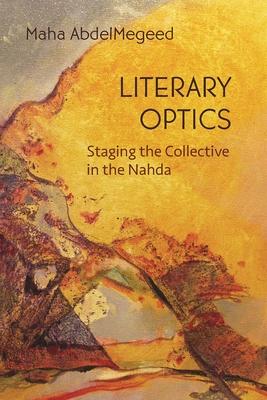In Literary Optics, Maha AbdelMegeed offers a compelling and far-reaching alternative to the traditional mode of analyzing Arabic literature through an encounter between Arabic narrative forms and European ones. Drawing upon close engagements with the works of canonical authors from the period, including Hassan Husni al-Tuwayrani, Muhammad al-Muwaylihi, Ali Mubarak, Francis Marrash, and 'Abdallah al-Nadim, AbdelMegeed addresses not where these works emanate from but rather how and why they were drawn together to form a canon. In doing so, she rejects the expectation that these texts, through the trope of encounter, hold the explanatory key to modern Arabic literature.
In this reformulation of Arabic literary history, AbdelMegeed argues that the canon is forged through an urgency to define a new form of political sovereignty and to make history visible. In doing so, she explores three pivotal concepts: the spectral (khayal), the trace (athar) and the collective (alnas). By examining the texts through these concepts, Literary Optics provides a remarkable intellectual history that delves into the aesthetic, philosophical, and political stakes of nineteenth-century Arabic literature.
In Literary Optics, Maha AbdelMegeed offers a compelling and far-reaching alternative to the traditional mode of analyzing Arabic literature through an encounter between Arabic narrative forms and European ones. Drawing upon close engagements with the works of canonical authors from the period, including Hassan Husni al-Tuwayrani, Muhammad al-Muwaylihi, Ali Mubarak, Francis Marrash, and 'Abdallah al-Nadim, AbdelMegeed addresses not where these works emanate from but rather how and why they were drawn together to form a canon. In doing so, she rejects the expectation that these texts, through the trope of encounter, hold the explanatory key to modern Arabic literature.
In this reformulation of Arabic literary history, AbdelMegeed argues that the canon is forged through an urgency to define a new form of political sovereignty and to make history visible. In doing so, she explores three pivotal concepts: the spectral (khayal), the trace (athar) and the collective (alnas). By examining the texts through these concepts, Literary Optics provides a remarkable intellectual history that delves into the aesthetic, philosophical, and political stakes of nineteenth-century Arabic literature.Paperback
$34.96